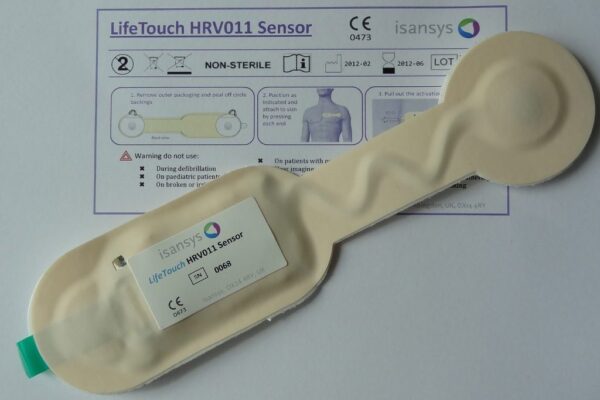
Patient status engine combines wireless body-worn sensors with cloud-based electronic health record
The Patient Status Engine is a complete end-to-end system that integrates wireless body-worn sensors with a cloud-based HIPAA/HL7 compliant Electronic Health Record (EHR), to transform real-time and historical continuous vital sign data into clinical status indicators and prediction tools. With the availability of these new cloud-based indicators and tools, healthcare providers can be notified of any change in a patient’s health status as it happens or predict changes that may happen in the future. This can address issues of in-hospital patient safety and avoidable deteriorations and significantly reduce hospital admission times. The Patient Status Engine allows healthcare providers to continue 24/7 surveillance of patients even after they have been discharged from hospital. As a networked and cloud-based system, patients and clinicians may be located anywhere. A further benefit is that a quantified record of a patient’s physiological status is established that can be used for audit purposes or to determine the effectiveness and quality of care.
Last month, Isansys announced CE certification for its LifeTouch Patient Surveillance System, comprising the LifeTouch HRV011 intelligent body-worn wireless sensor and associated Patient Gateway believed to be the world’s first cloud-ready medical device of its kind, and the first to be certified as a Class IIa medical device under the European Medical Device Directive (MDD). Today’s Patient Status Engine launch is the extension of the LifeTouch System into the clinical healthcare cloud. The LifeTouch HRV011 sensor performs a key patient digitisation function within the Patient Status Engine, and together with other devices allows healthcare providers to collect five vital signs continuously, wirelessly and in real-time – Heart Rate (HR), Respiration Rate (RR), Blood Pressure (BP), Pulse Oximetry (SpO2), and Temperature (T). The system also analyses the ECG signals to provide the essential data for Heart Rate Variability (HRV) techniques and methods. Other sensors such as accelerometers, weight scales and blood glucose sensors can be easily added to the network.
The data from the body worn sensors is transmitted via a patient gateway and LAN or WAN to the cloud-based EHR, which offers a powerful transactional interface to allow multiple and simple configurability and connectivity of incoming and outgoing data. The vital sign data continuously updates the EHR to provide dynamic charting, and is aggregated in the EHR where “apps” run to provide interpreted data and other information to nurses and clinicians (and, eventually, to patients and monitored individuals themselves). A typical "app" is a predictive early warning scores (EWS) algorithm that can be proprietary to the customer or licensed from a third party.
The Patient Status Engine is completely scalable. It can either run in a closed cloud allowing a single hospital, regional healthcare organization or HMO to maintain control over patient data; or it can run in a secure large cloud, for instance as a managed service across a whole country. The aggregated and de-personalised data in the database quickly builds into highly valuable Big Data sets for metadata analytics.
Visit Isansys Lifecare at www.isansys.com
 If you enjoyed this article, you will like the following ones: don't miss them by subscribing to :
eeNews on Google News
If you enjoyed this article, you will like the following ones: don't miss them by subscribing to :
eeNews on Google News




